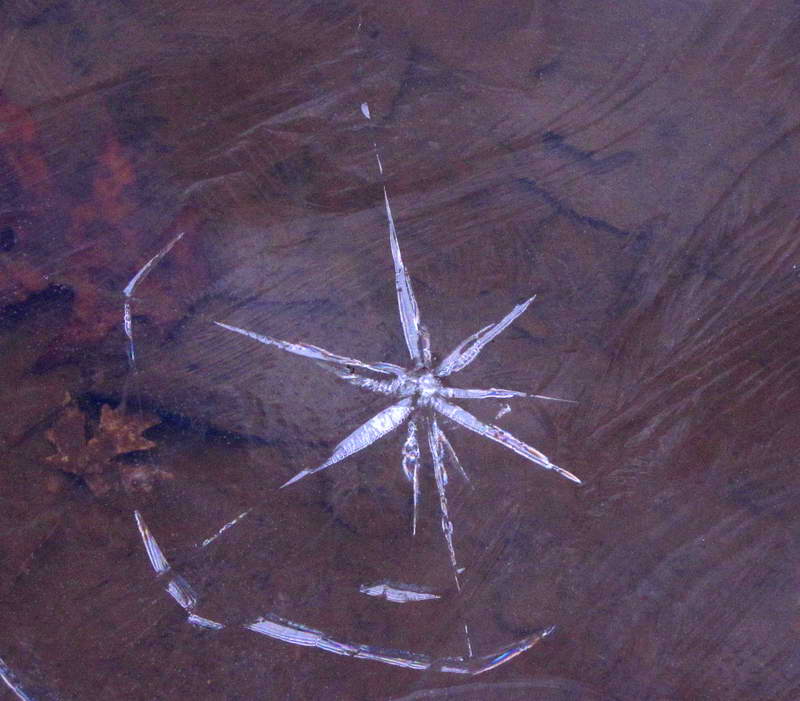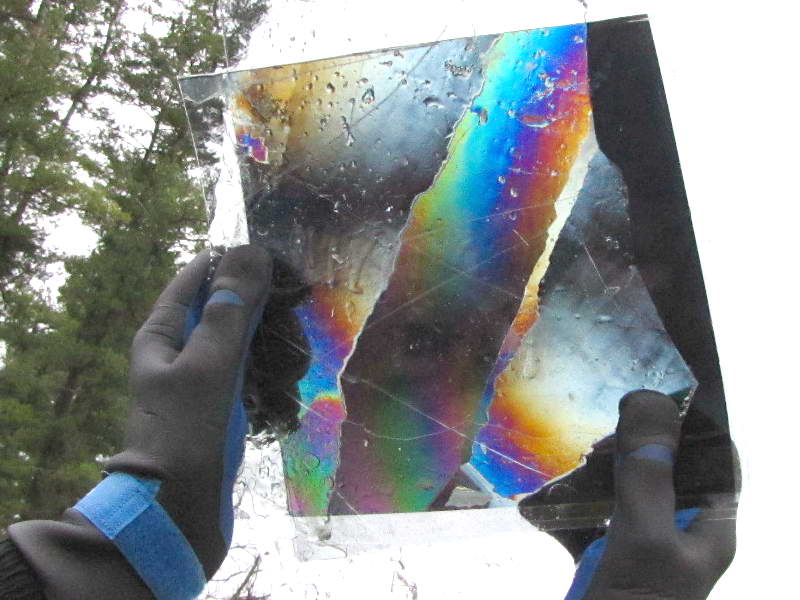 This is an 'impact star' on 1 cm thick, S1 ice (large grain, vertical C axis). The impact was made with a light tap with the blunt end of a wooden test pole. The star is about 6" (15 cm) across. The star shows the radial cracks that form first and a circumferential crack that indicates the ice sheet is on the verge of failure (1)
This is an 'impact star' on 1 cm thick, S1 ice (large grain, vertical C axis). The impact was made with a light tap with the blunt end of a wooden test pole. The star is about 6" (15 cm) across. The star shows the radial cracks that form first and a circumferential crack that indicates the ice sheet is on the verge of failure (1)
Introduction to Ice Science
Thousands of scientific papers have been written on ice science and many scientists have devoted their lives to the field. Many books have been written and several of them are sill in print. Most of this work is related to polar ice, glacial ice, ice physics, etc., however there are a reasonable number of papers that are relevant to lake ice. This section of the website looks a bit deeper into why ice behaves the way it does. It tries to bridge the gap between the rigorous scientific world and what we see on the ice.
One of best libraries anywhere for lake ice science is the Cold Regions Research and Engineering Libratory, an Army Core of Engineers laboratory, located in Hanover New Hampshire. CRREL scientists have produced a great deal of the scientific work that has been done on the ice we like to play on. Other hotbeds of ice research are, as will come as no surprise, Scandinavia, Russia and Canada.
Bob
Ref (1) River Lake Ice Engineering Edited by G. Ashton, Page 184, Water Resources Publications, LLC, 2010 printing.
 Ice from the same ice sheet shown above, between crossed polarizing sheets showing the individual crystals. Ice thickness: 1 cm (a bit on the thick side for this technique).
Ice from the same ice sheet shown above, between crossed polarizing sheets showing the individual crystals. Ice thickness: 1 cm (a bit on the thick side for this technique).
